
Archives

Archive for November, 2010 | ||||||||||||||||||||||||||||||||||
Virtuoso!Posted on November 2, 2010 | Click for larger images
| Since posting photos of some of our earlier guitars, we've been receiving custom inquiries for a variety of discontinued models. We recently were asked whether we could build a Virtuoso. As a result, we decided to hunt one down to refresh our recollection of how we built them and to photograph it for future reference. Paul Hamer designed this guitar in 1986, aptly naming it after the type of musician who would covet such an instrument. The first Virtuoso was completed in January, 1987. We continued to build Virtuosos on a most limited basis into 1989. This one was built in June of 1988. The lacquer checks reveal its age while adding to its personality. 36 frets on a scalloped maple fingerboard.
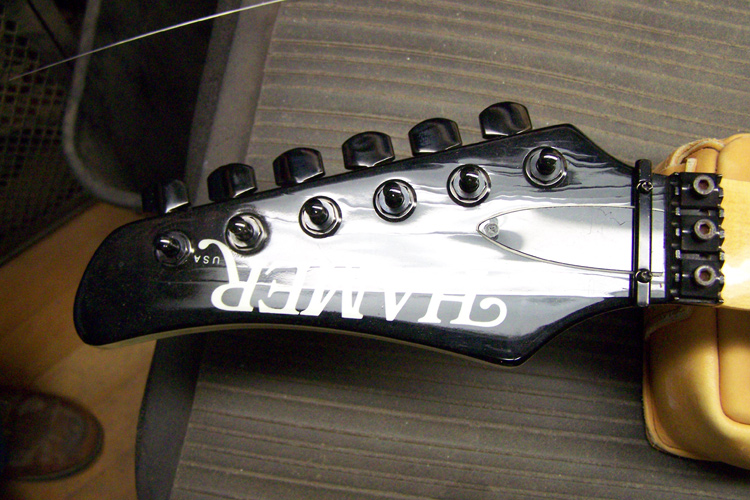 Reverse peghead, mondo logo, Floyd Rose tremolo. 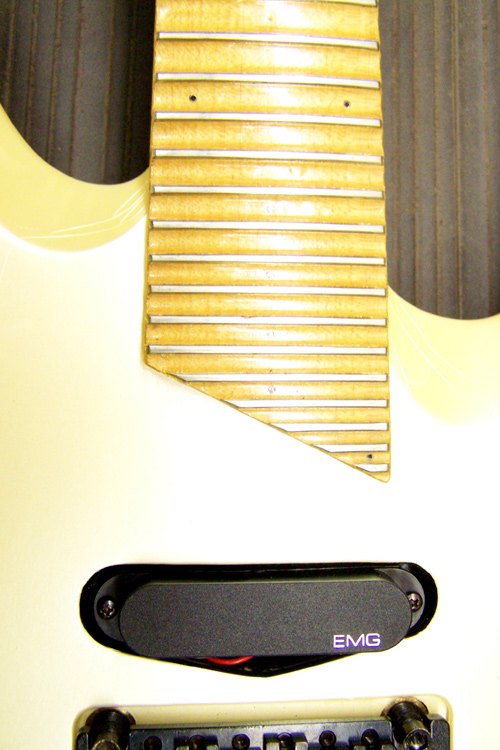
|
| 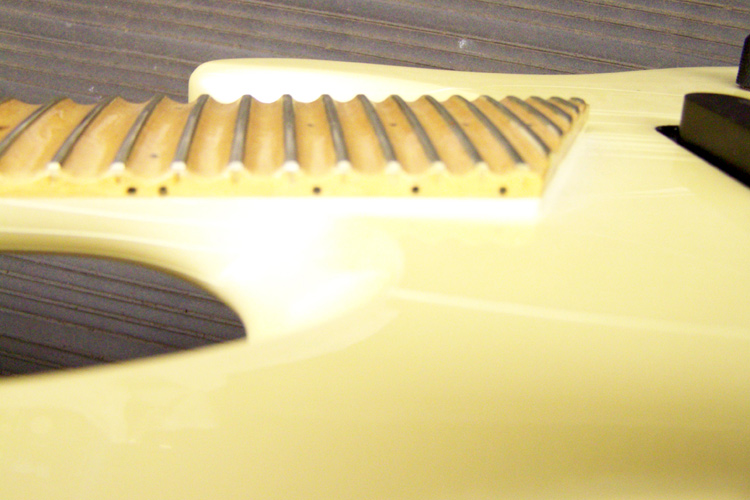
Can't get enough of that fingerboard. 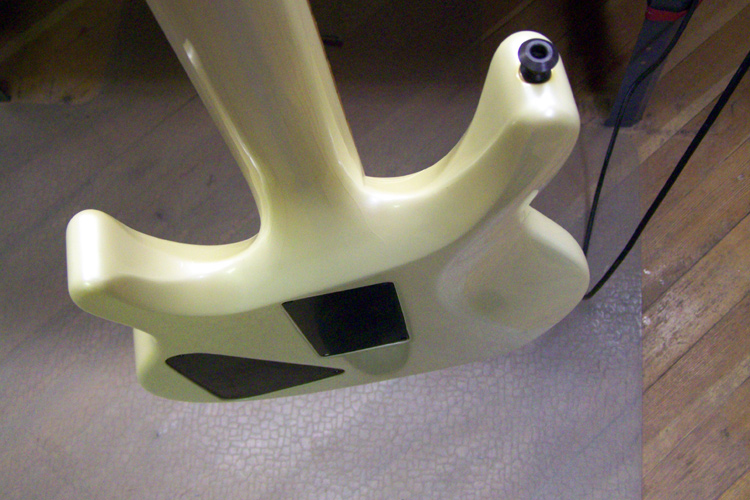 Smoothly blended heel. 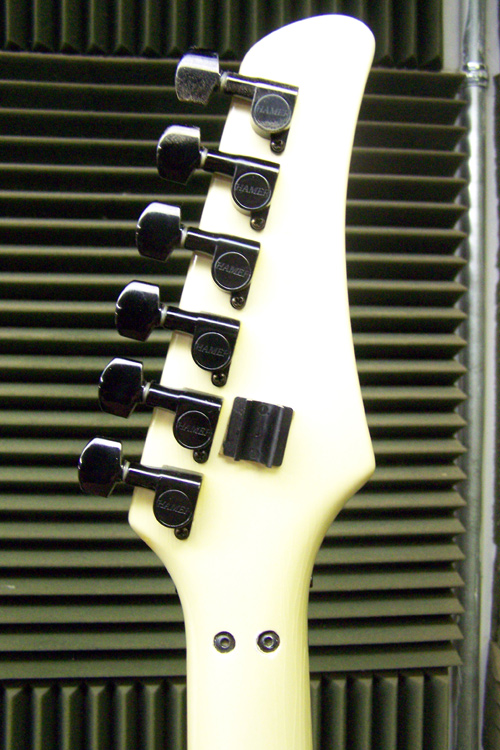 Early Floyd Roses bolted through the neck. Hamer pioneered the use of the Floyd Rose on a "production" guitar. The Floyd allen key holder was mounted to the back of the peghead. 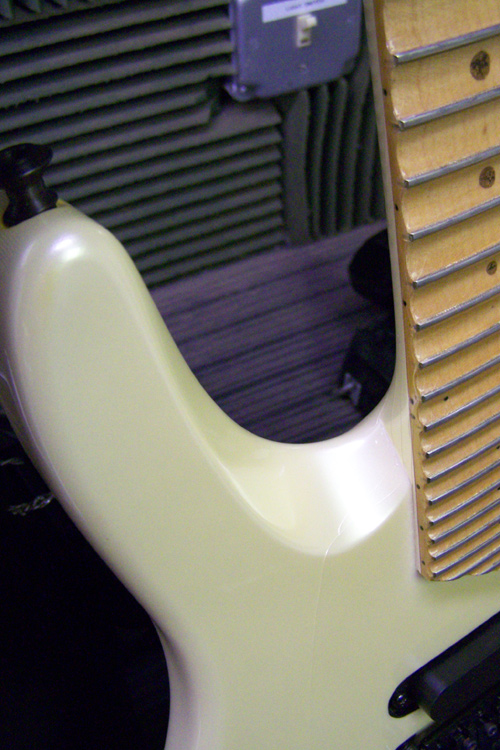 Extended cutaways for those who dare play past the 24th fret. We'll see whether we get an order for a Virtuoso some 20 years after it was discontinued. Custom CollagePosted on November 15, 2010Throughout our history we at Hamer have learned much through the customization process. Many struggle with defining exactly what comprises a custom guitar. We feel that pretty much every guitar that we build is custom. Yes, we do have a line stock models; it's the build process itself that renders the guitars custom. We thought that we'd treat you to a collage of some of the guitars currently being started, in process and being completed. We'll let you decide what is custom building and what is not. Here's a Korina Special in progress. The double cutaway was our original production guitar body shape, introduced on our Sunburst Series. The Sunburst featured the Sustain Block bridge, a true Hamer innovation. We eventually moved away from the Sustain Block. However, ongoing custom requests led us to reintroduce it, most notably on the Talladega. This Korina Special looks pretty custom built to us...but is it a custom guitar? 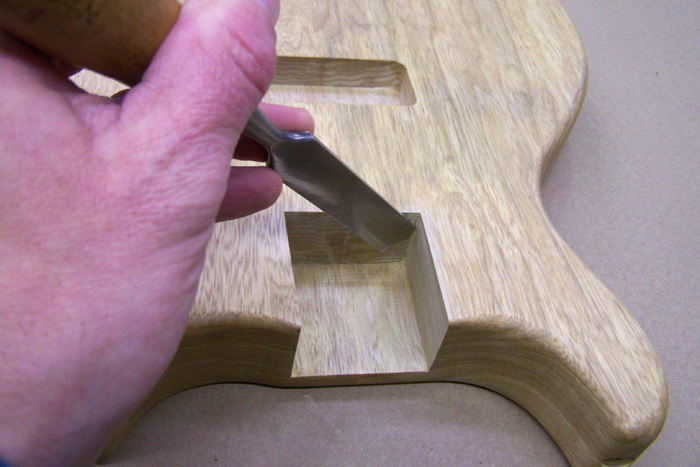 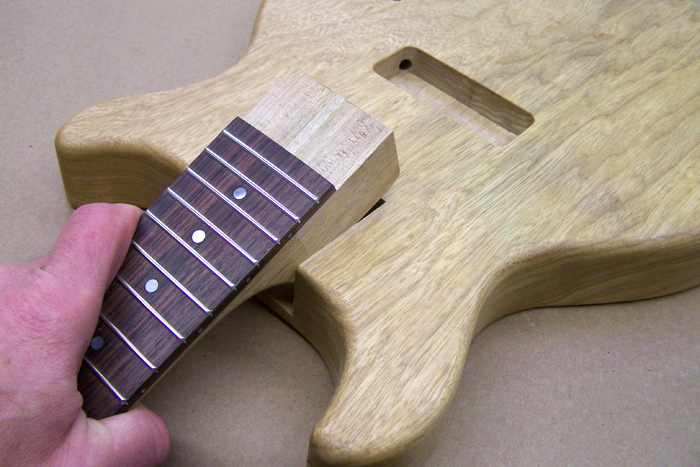 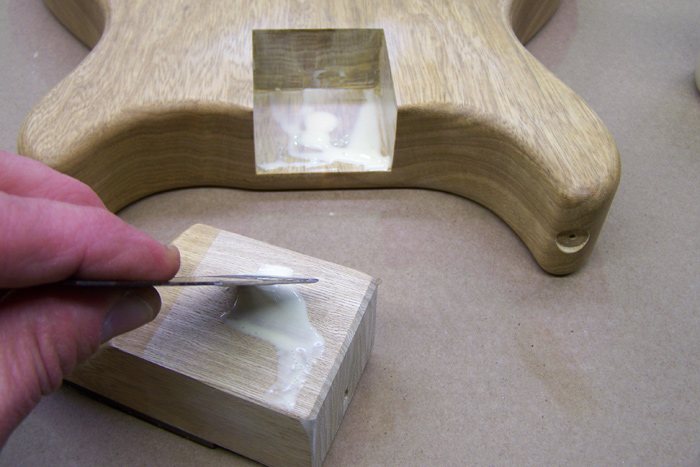 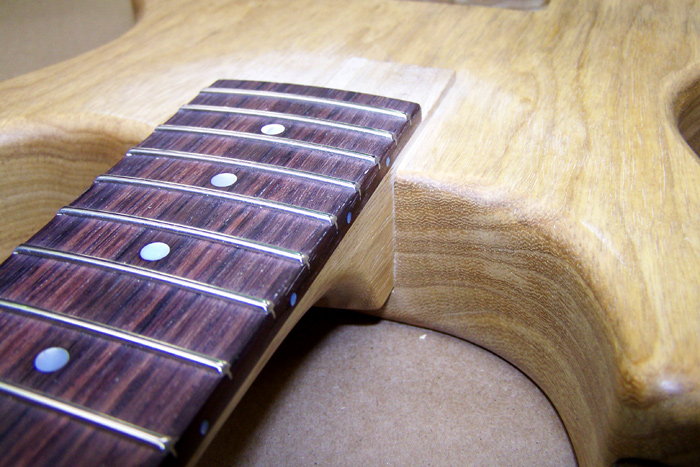 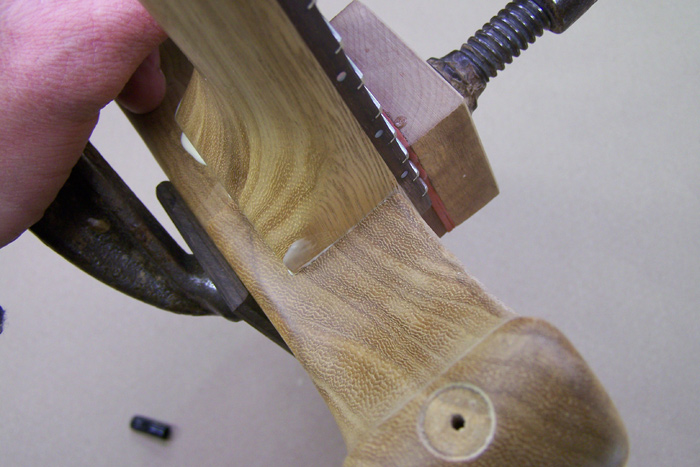 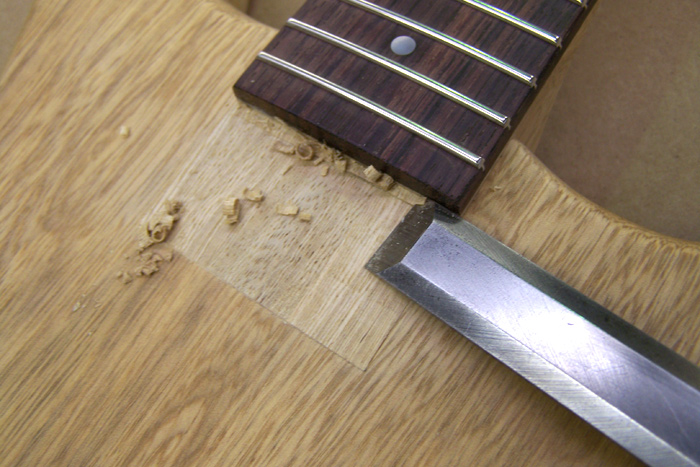 We also received custom requests for guitars with sound chambers. We adapted chambering to a number of models, such as this Newport Pro. We even began chambering our Standard with a honeycomb pattern. Now, perhaps unsurprisingly, we receive custom orders for guitars without the sound chamber. 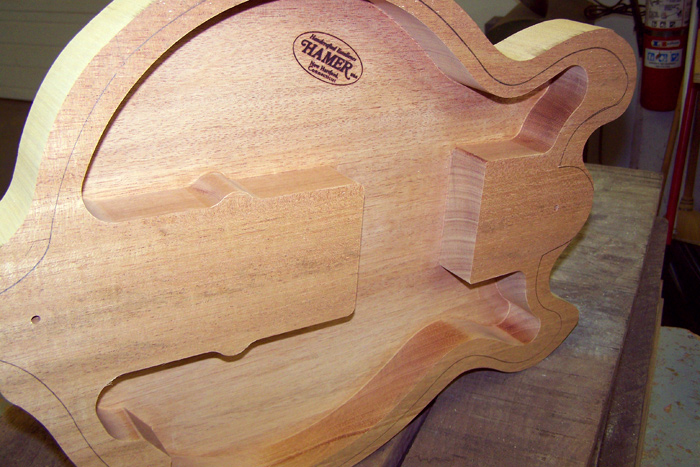 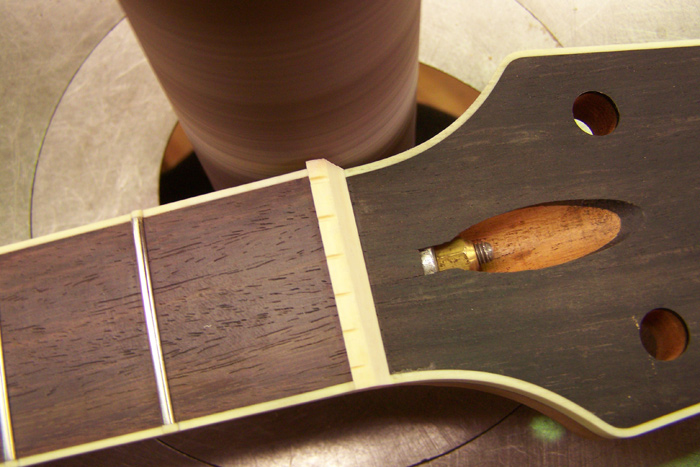 Here we are sanding the neck of the Newport Pro, a stock model. 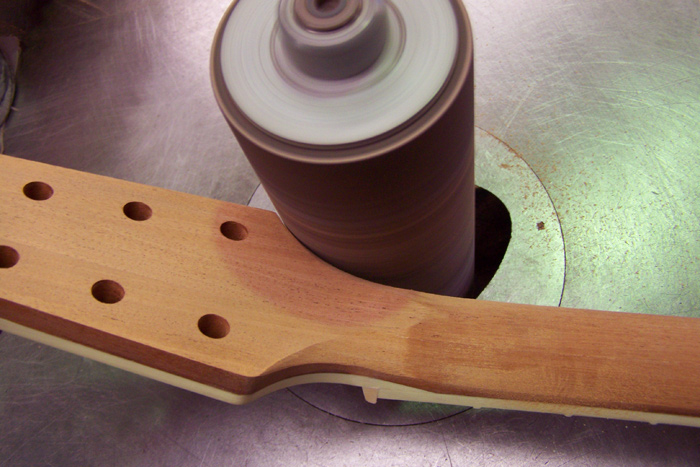 Custom work? 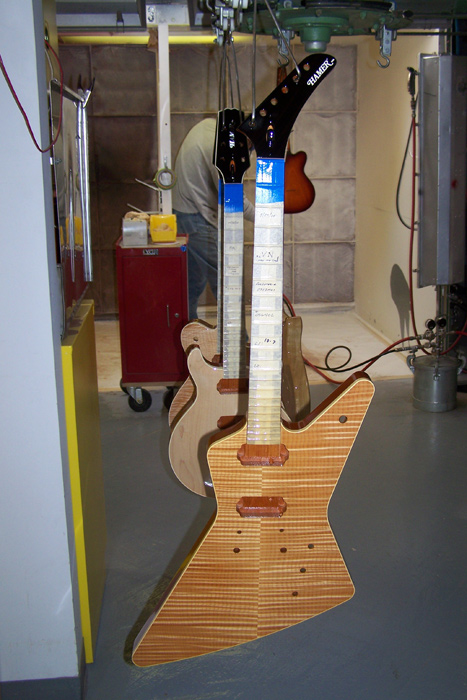 We listened to our customers and decided to change our logos to be inlaid mother of pearl. We felt that it was a needed upgrade in the product line. However, some customers prefer that we use our original paint transfer logos placed in the position that we did at the beginning. 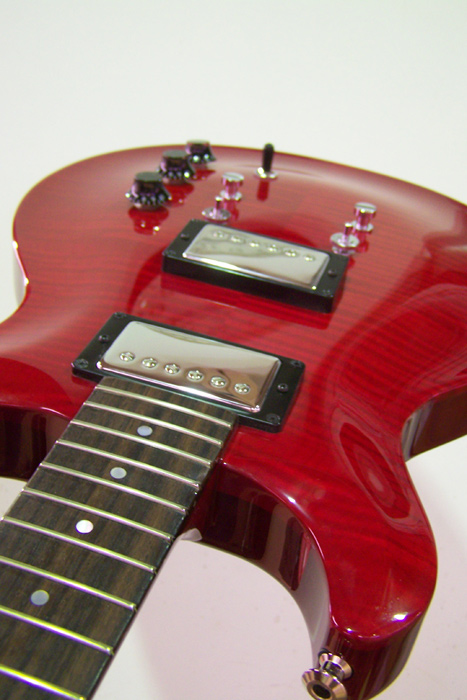 Here are some guitars nearing completion. A simple Studio in cherry transparent. 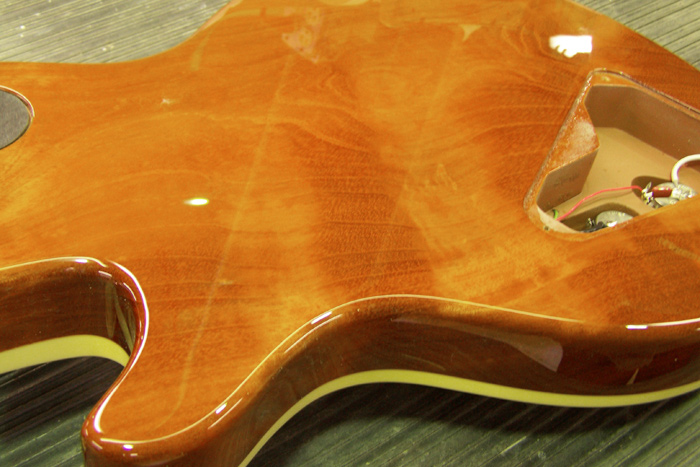 The mahogany on this Newport is unique. 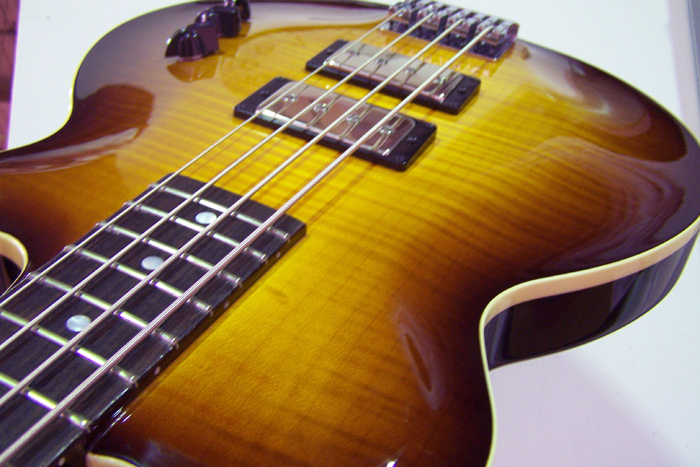 The Monacao Bass is part of our standard product offering but when we were building this one it it certainly seemed custom made to us.
| 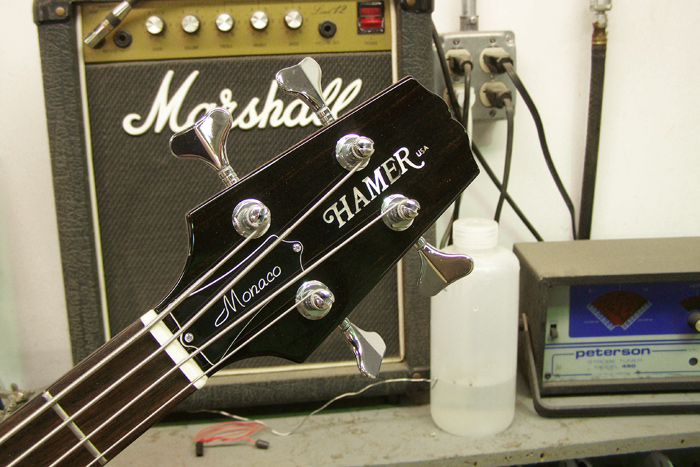 While Hamer has predominantly been known for its guitars, some of our biggest innovations have been with basses.
There are a number of colors that were once considered custom and are now stock. Blue Transaparent. 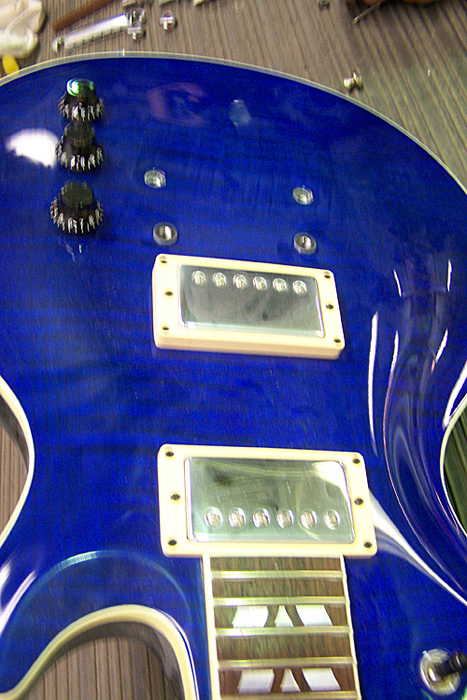 Black Transparent. On occassion we've turned down custom requests. While we try to remain consistent in our approach, there are varied reasons for such a decision. At times we as a company were moving in a new direction and a customer wanted to hark back to guitars, or elements of guitars, that were not representative of that direction. Currently, we make every effort to accomodate such custom orders. Some requests involve us using a competitor's trademarked features. Understandably we cannot undertake such work. Sometimes we simply had not yet developed a way to deal with a given request. As a result, one day we couldn't accomodate a given custom request and later, after we had developed a new process or procedure, we suddenly could. Because they are so visible, artist guitars can present a real dilema. We have worked out arrangements with some artists to offer models that we jointly developed with them. Examples include the Steve Stevens and the Watson. With other artists no such agreement exists and so the instrument remains a signature guitar for the particular artist. On still other occassions, we have an agreement for one artist model, but not another. Examples of this are Glenn Tipton's Phantom GT versus Glenn's current more radical guitar and the Rick Nielsen model that we introduced in 1998 versus Rick's five necks and checkerboard finishes. We well know that with customs and customization lines get blurred and mistakes can be made; it seems to be the nature of the work. We're doing our best to remain consistent and error free. To all of you, thanks for your support. 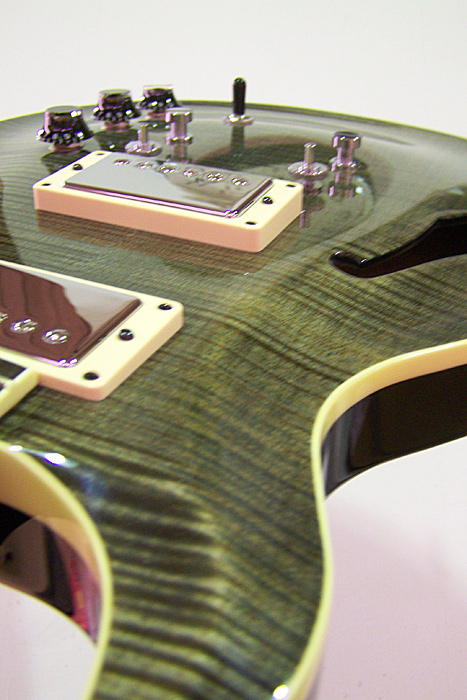 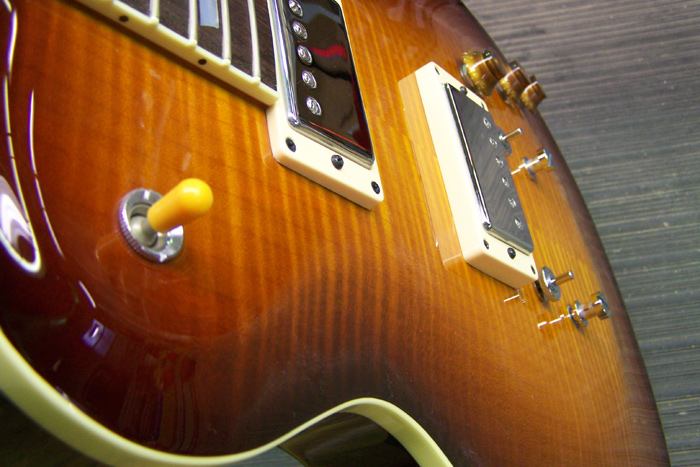 Previous Month
| Next Month
| | |||||||||||||||||||||||||||